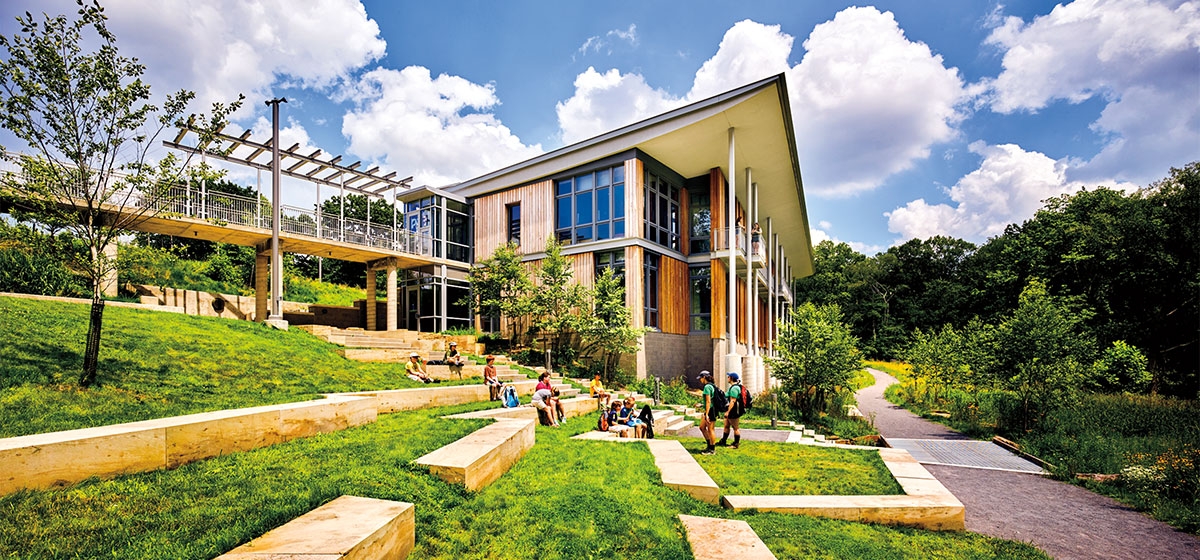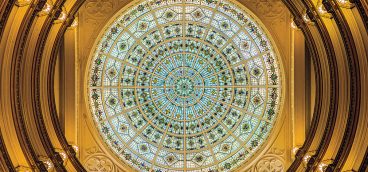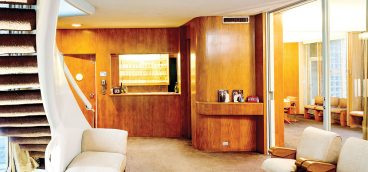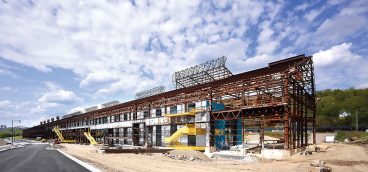Frick Environmental Center Achieves Living Building Challenge Status

Great architecture should be built for the ages. Imposing piles, whether in stone or steel, are supposed to indicate heroic resistance to the ravages of the elements as both practicality and art. And yet in the era of the environmental movement, some portion of this equation has been inverted. We now ask, what is the effect of the architecture on the elements? The assertion that buildings use 50 percent of the world’s energy—most often as climate-harming fossil fuel—is now boilerplate in discussions of new building. The current movement of environmentally conscientious building insists that we do better.
The Frick Environmental Center has been doing much better since its opening in 2016 as a replacement for a structure from 1979 that burned in 2002. Pittsburgh Parks Conservancy founder and former CEO Meg Cheever described the ambition for the new version to be “one of the greenest buildings in the world,” and assembled a team to make it possible. Architects Bohlin Cywinski Jackson and landscape architects LaQuatra Bonci Associates both bring portfolios of nationally recognized, award-winning projects at the intersection of aesthetic design and green building and landscape. Construction manager P.J. Dick has built more projects with independently certified environmental achievements than any other contractor in the region.
In late spring, the Frick Environmental Center received Living Building Challenge certification from the International Living Future Institute, the most palpable measure to date of its environmental performance. The building had already received LEED Platinum (Leadership in Energy and Environmental Design) status from the U.S. Green Building Council, but the Living Building Challenge certification is a higher order of rigor. At Williams College in Williamstown, Mass., while pursuing Living Building Challenge status for its Kellogg House building renovation, a building committee reported concisely, “Where LEED’s goals could be summarized as ‘Do less harm,’ the Living Building Challenge’s tagline might be ‘Fix the damage.’ ” It’s a much more rigorous standard that fewer buildings meet. Pittsburgh’s Phipps Conservatory Center for Sustainable Landscapes achieved the goal last year, but thus far only about 20 projects have achieved this status. Pittsburgh is the only city with two, and the Frick Environmental Center is the only municipal building that is open to the public.
The Living Building Challenge has seven core categories with additional subgroups, but its essential mandate is direct: a structure must produce more energy than it uses. It must capture all the water it uses from the rain. And it must follow stringent rules in building materials to use regional resources and avoid toxic chemicals. LEED programs allow builders to pick and choose. For the Living Building Challenge, a building must meet all of the standards.
At the Frick Environmental Center, contributing elements are both conspicuous and hidden. A large photovoltaic array, acting as a shade over the parking lot, serves multiple duties: it generates electricity and captures rainwater. The building must be net zero or net positive in its use of both resources, but a crucial parameter is the ILFI measures performance over a 12-month period. Sustainability coordinator Maureen Olinzock admits that the photovoltaics’ energy generation falls behind consumption just a bit over the winter, “but we more than make up for it over the summer,” she says. “We can sell an indefinite amount of electricity back to the grid.” Indeed, though the electricity use was studied through energy modeling before construction, the photovoltaics produce more energy than anticipated.
Water drained from the photovoltaic array is stored in a 15,000-gallon cistern. Olinzock explains that the Frick Environmental Center only uses captured water for non-potable uses—watering plants and flushing toilets. They could not get a waiver to treat drinking water on site, so they get drinking water from PWSA. Still, by capturing an amount of rainwater equivalent to their total use, including from PWSA, they are able to achieve net zero status for water.
Regulating building temperature is also a delicate balance of collection and use. Water circulates through a network of 18 geothermal wells, each 500 feet deep, that are arranged invisibly below ground along the allée at the park entrance. The deep ground temperature is a constant 50 degrees. Water circulated to the wells is passed through heat exchangers and used to heat the building in the winter and cool it in the summer. Radiant floors provide both heating or cooling, supplemented by forced air.
Windows are almost all operable, with a combination of manual and automatic opening. Small red and green lights are placed throughout the building. Flashing red means that windows are open but should be closed. Steady red indicates that windows are closed and should remain so. Similarly, steady green means windows are open and can remain that way. Flashing green means windows are closed but should be open.
Building mechanical systems all operate through a software-based building automation system. “There are a lot of things that need to be set up a certain way,” says site manager Reed Hoffmier. “It’s not just a static thing. It changes with time of year and outside conditions.”
Among the building’s high-tech functions, other sustainable elements are historic or even timeless. The broad eaves that admit direct sun in the winter but block it in the summer look a bit like Frank Lloyd Wright in style, while building the structure into the hillside for insulation and facing south through shade trees go back to some of the earliest human habitation.
For all of the delicate balances of operation, the building is reasonably comfortable to work in. “Sometimes in the winter, you need a sweater,” Olinzock admits, adding that the automation system keeps temperatures reasonably comfortable.
Even after passing the Living Building Challenge 12-month test, they don’t plan to slack on operating at net zero or better. “We want to be as environmentally sustainable as possible,” says Olinzock.
Mayor Bill Peduto recently commented of the Frick Environmental Center, “It’s always been about how we’re able to work together, in order to produce something that we can hand to the next generation.” In this case, that something is a more sustainable environment as much as the great building itself.





